1971 Laverda 750SF
Related pages
Most recent posts at the bottom
- Top-end Teardown
- A Freshened Gearset
- A Tour of the Engine Cases
- Bottom End Assembly, Session 1
- Oil Pump Installation
History
In 1997 my wife went down a big rabbit hole and bought a house in southern France, in the beautiful village of Auvillar. Naturally I started spending time there too and it wasn’t long before I felt the need to have “une moto” there, to take advantage of the fabulous small farm roads that criss-cross the region. I was at a newsstand towards the end of my stay in August 2000 and saw a motorcycle magazine that seemed to focus on old bikes. I flipped to the classifieds and scanned through, looking for something interesting with an “05” telephone exchange (our local area code), since I didn’t know the names of most of the cities. I spotted a 1971 Laverda with an asking price around 21000 FF, and bought the magazine. I don’t speak French but Susie does so I had her call the number, but the guy who answered spoke pretty fair English so we chatted a little about the bike. It all sounded good and he was on the east side of Albi, a couple hours from us, so we drove over the next day. Fred Arger was selling the bike for his friend, the Big Butcher, for whom he had rebuilt it a couple years ago. But BB never rode it.
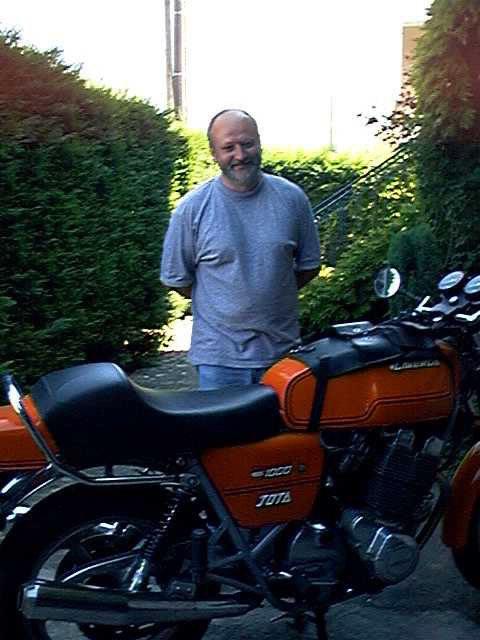
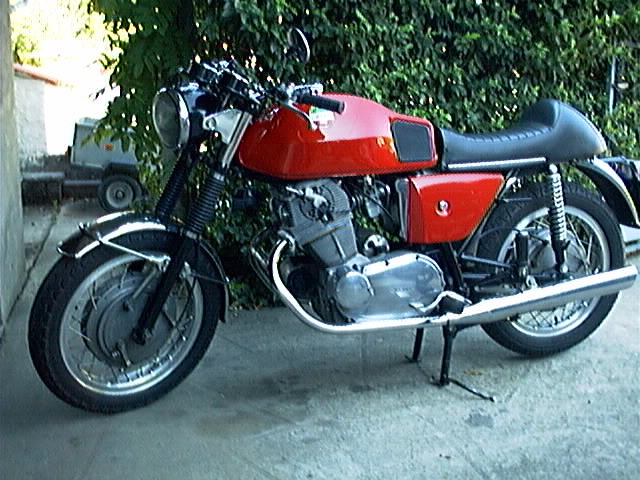
The SF was first registered on October 25, 1971. Frame and engine number are 6349. It’s the first series SF with S-type gas tank and first generation Laverda drum brake. This is the model from which the famous SFC was developed. The first SFCs (a batch of 20) were built in May 1971, with serial numbers in the range 56xx to 59xx.
My SF was fitted with the first type air-cleaner, but Fred said it runs better with open stacks and that’s the way these bikes were intended to be. I rode the bike a bit, ran out of gas, looked at Fred’s Jota, Montjuic, and other toys, agreed to buy it, had a nice lunch with Fred. Then we went to see BB (aptly named, he is huge), had a drink, ate some lovely snacks, and I agreed to buy it for 20,000 FF (about $2800). A couple days later Fred rode the bike to Auvillar, with the Big Butcher following by car. The next day Susie and I went to the registration office in Castelsarrasin. It was all very easy, except for finding the office, and I came out with a Carte Grise, the French version of a title and registration. It cost about 315 FF (~$45) to register. I only had time for a few short rides before I had to leave, so I laid it up in the barn of a friend in Auvillar.
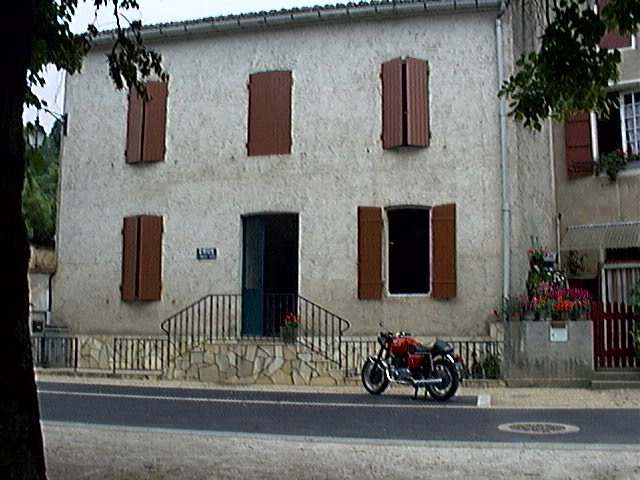
When I got back to Auvillar the next summer I arranged for insurance and started prepping the bike for regular use in France. I had already been living with a 1973 Laverda 750SF1 for a couple years so I knew what was needed. I enjoyed the SF around our part of France for the next couple years but in 2003 I joined Dave and Robin Webster in participating in the revival of the traditional Moto Giro d’Italia. For that adventure, Dave and Robin came to Auvillar a couple weeks early and we found a Moto Morini Dart 400 for them to ride two-up from Auvillar to Milan (cozy), where they picked up a rental Ducati Monster 620 so they could ride separately in the Giro.
The Laverda provided a few technical challenges along the way: the shift selector came loose (a messy but fairly simple fix on the roadside), a dirty fuse holder cut the power at an awkward moment, the electric start solenoid failed (I learned to short across the terminals with a screwdriver) and during the Giro I had trouble with one cylinder running lean, which turned out to be an air leak in one of the intake manifolds. But it got me there and back.
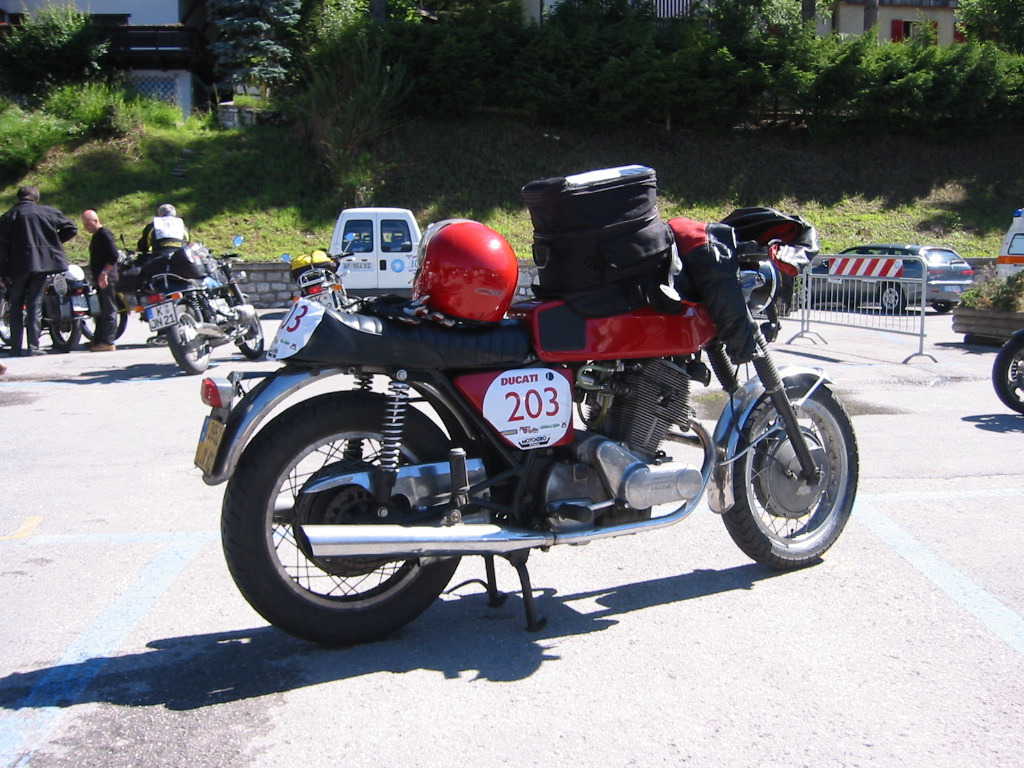
I continued enjoying the SF for brief periods when I visited Auvillar but I always felt a bit guilty about not having the time or facilities to properly maintain it. When Susie decided to sell the French house in 2014, I decided that my journey with the SF was not yet finished so I shipped it back to the U.S.
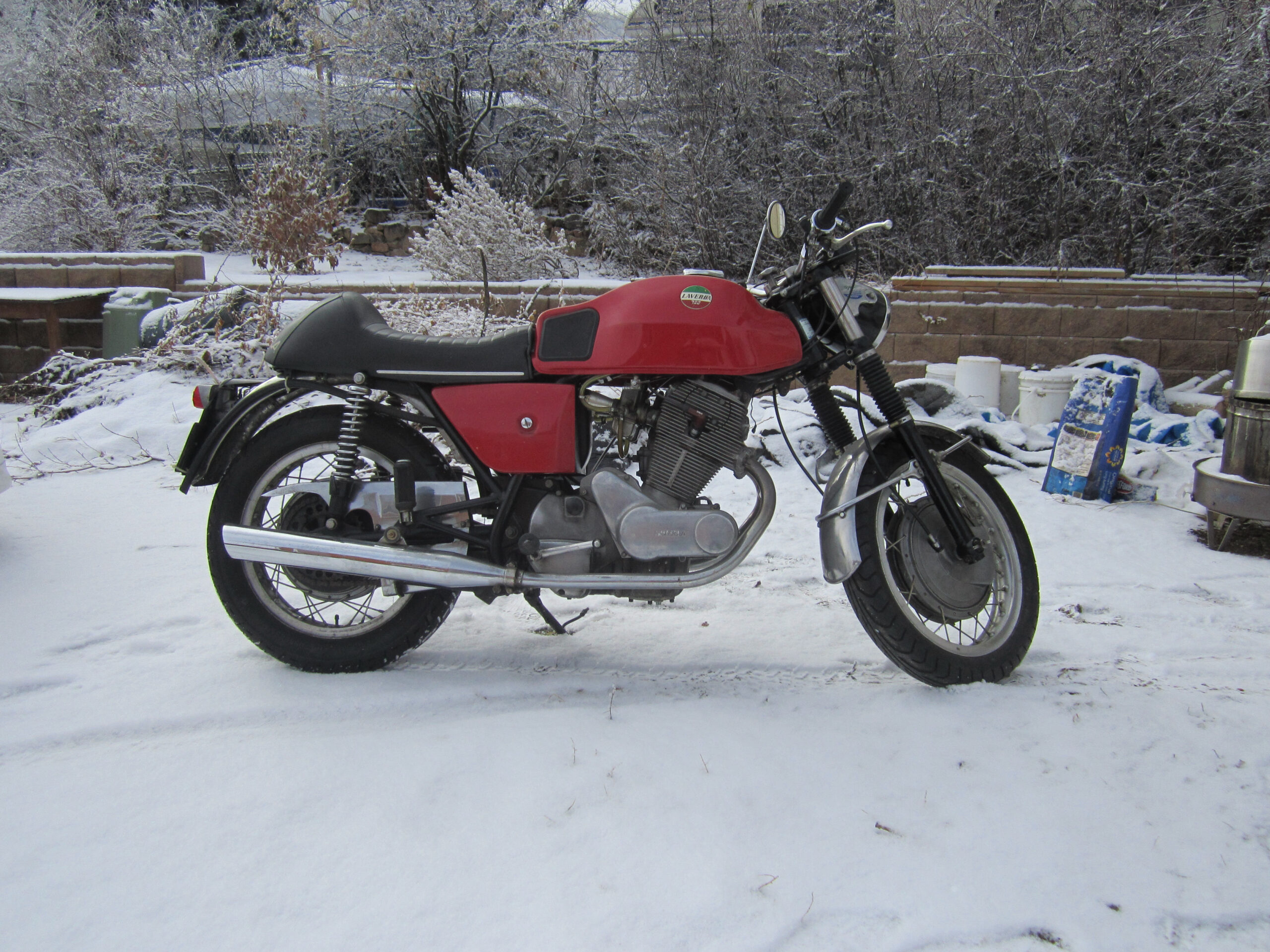
In the years since getting it into my shop in Golden I’ve done a fair bit of work on it, some of it in the spirit of bringing it more into it’s original form, and some updates. The main issue with originality was that I discovered the headlight assembly, although a Bosch unit of the correct era, was not correct. After quite a bit of research and hunting I was able to collect the correct parts and put it back to original. On the other hand, the wiring loom was getting tired. Since I ride my old motos I have come to accept that rewiring is sometimes needed and I am not averse to using modern components in order to gain reliability. I rewired the SF with some upgrades, such as a modern fuse box with blade fuses. At some point I may see about sourcing a modern replica loom and doing it as close to original as I can.
After several attempts to fit an aircleaner to the SF I gave up and I now run it with open bellmouths. I could never get the engine to run well with any restriction in the airflow. Fred was right.
Currently the SF is my “Italian Commando”, the bike I usually ride with Norton Colorado since I sold both my Commandos. It fits in very well with the Nortons in all respects.

Holey Pistons, Batman!
In September 2021 I took the SF to a Norton Colorado gathering at the home of one of our members who lives about 30 miles south of me. Most of the route there is on a high-speed beltway that encircles much of Denver. It was a beautiful day, a jolly gathering and the SF was running strong. On the way home, on the beltway, I dialed it up more than usual and ran along at 85-90 (with the faster traffic) for a number of miles. As I approached the Golden exit the last stretch is a long uphill grade that passes next to the famous Bandimere Speedway drag-strip, site of many a blown engine, and the Laverda decided that was an appropriate place to lose one cylinder. I immediately suspected a holed piston, as these early SFs are known to be prone to that failure, and a little probing with a stiff wire after I got the bike home confirmed it. I was busy with other projects so I let the SF sit most of the winter but in May 2022 I pulled the engine out for full disassembly. I could have just done a top-end job but I’ve never been into the bottom end and I wanted to have confidence that everything down there was in good fettle before installing the engine back in the chassis. The rebuild will be covered on several new pages (top of this page).
